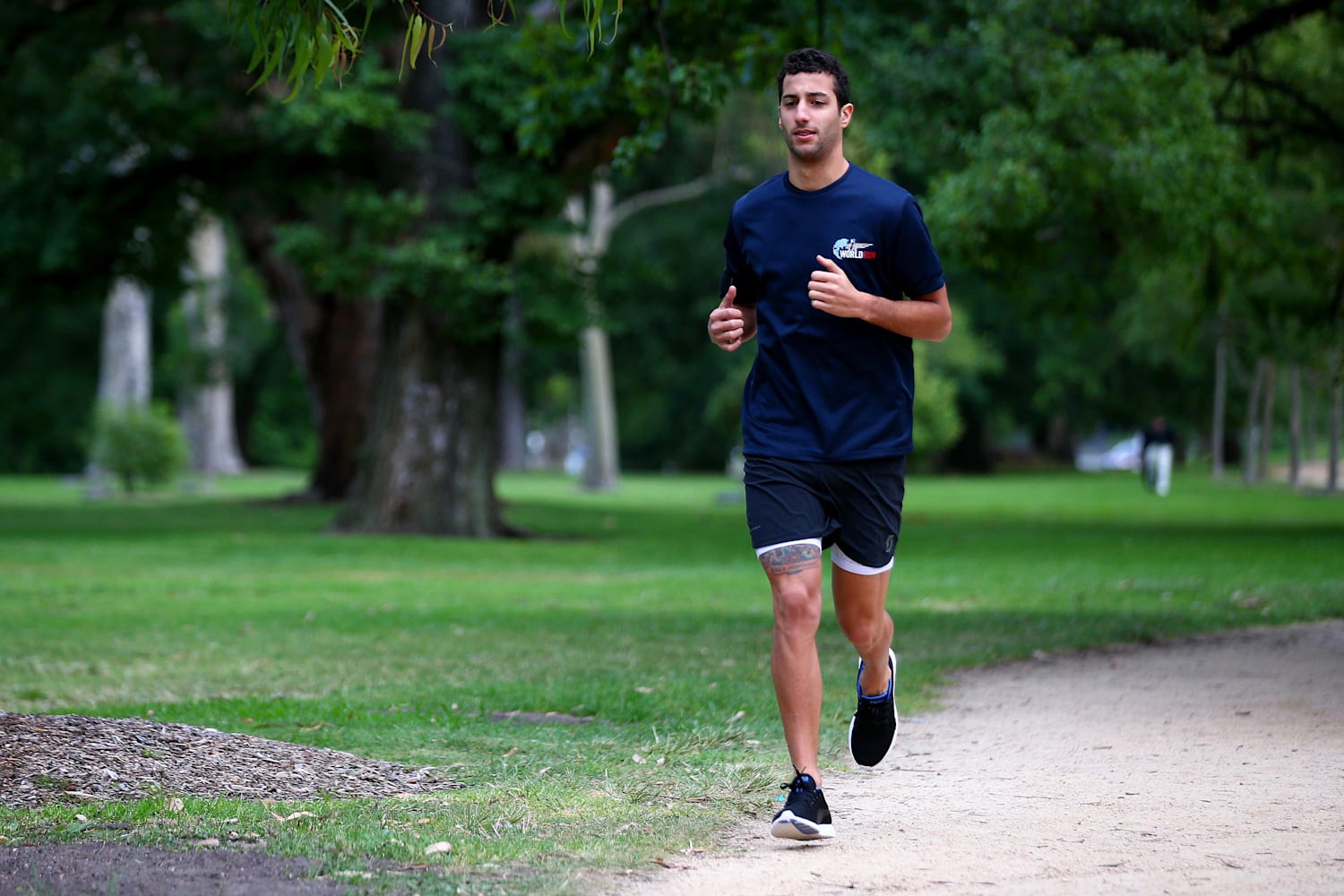We’re sure you’ve either secured yourself a workout routine to follow by now, or you’re well aware that during isolation you’re going to be spending a lot more time on the couch, but plan to get back into the swing of things when lockdown lifts.
But regular weights and cardio regimes can get a little stagnant. Enter: Australian Formula One driver Daniel Ricciardo who may have just the thing to help you switch things up: reaction training. Reaction training has numerous benefits outside of just the sporting world. Obviously it has its merits in places such as football, boxing, tennis and of course, Formula One, but as a general skill, it’s certainly one you’d want to improve.
In Daniel’s example, he’s competing against a friend (he’s an F1 driver after all, so that has to be some sort of competition involved), bent over a tennis ball. A third friend calls out instructions for the guys to put their hands on various parts of their bodies: head, hips, knees, ankles, toes etc, before grabbing the ball to determine the winner.
Daniel proves victorious in the battle, but for a man of his driving calibre, you’d probably expect it.
So what actually is reaction training and how do you improve it? Freeletics explains our reaction times are “determined and controlled by our nervous systems.”
When we receive an action to react to – in Daniel’s case, being told where to put his hands – the sensor responsible (eyes, ears etc) sends a signal to the brain. The brain analyses the signal via “the efferent motoric neurons.”
It then gets passed on “to the muscles, which then execute the instruction. All of this happens almost instantly.”
There myriad ways you can improve your reaction times, most of which involve some form of exercise, so double the benefits, right? Freeletics adds these can include running on uneven terrain to help train your brain to avoid various obstacles and to stay more alert; or you can run through exercise drills slowly to help your body learn a routine, so when you’re asked to perform it at a quicker speed, your brain will know what to do.
Remember, reaction times are different to reflexes. Put your arms out to protect you when you fall, or catch a glass before it topples over? They’re reflexes. The difference? Freeletics chimes in by saying reflexes are your body’s way of protecting you from harm, and because this usually requires an even faster reaction than a reaction, the signals actually skip your brain and instead immediately go through the spinal cord.
So, if you want to improve your reaction times, no amount of forcing yourself to trip over is going to help.
